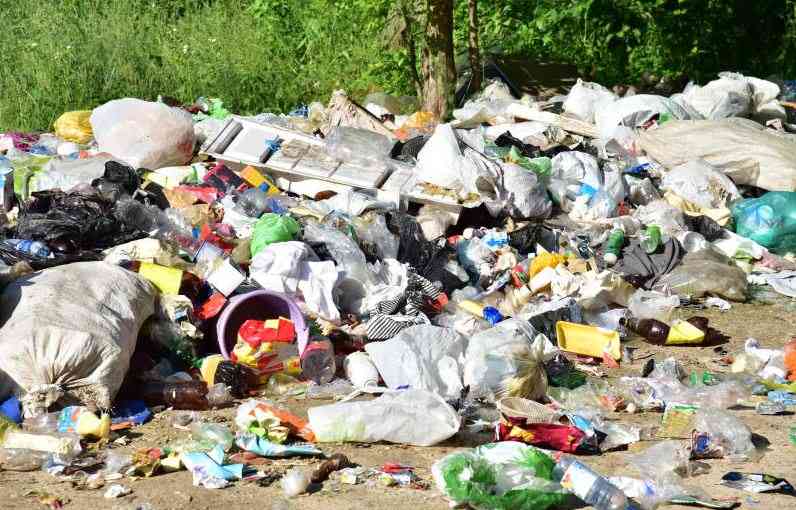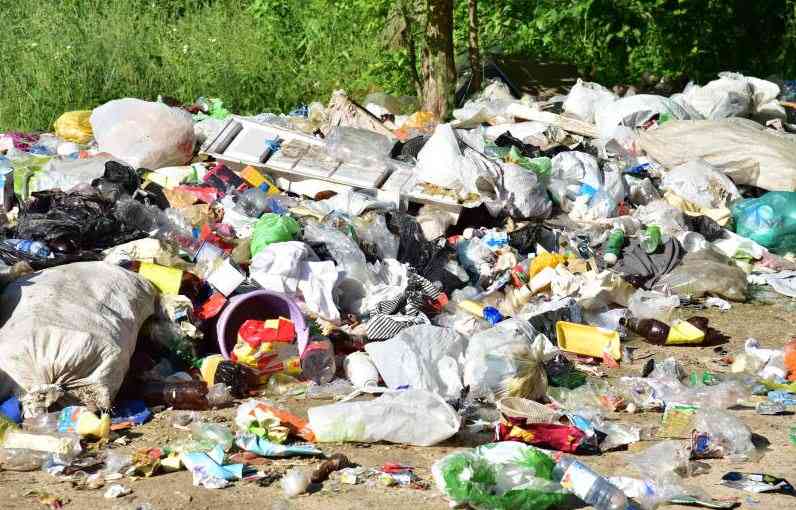Two cities, one crisis: The plastic puzzle Kathmandu and Nairobi cannot solve

From the winding streets of Kathmandu’s Thamel district to the bustling alleys of Nairobi’s River Road, one persistent issue unites these cities over 6,000 kilometres apart: plastic bags.
Despite legislation, bans, and numerous public campaigns, thin, translucent polythene bags—mostly in shades of blue and black—continue to dominate daily life, packaging everything from groceries and snacks to fruit and takeout.
Whether handed over freely by street vendors or stuffed into sacks by shopkeepers, plastic bags remain stubbornly embedded in urban culture, a modern convenience that has morphed into an environmental menace.
What lies beneath the surface of both cities, however, is not just a pollution crisis—it is a systemic failure to shift behaviour, enforce policy, and prioritise sustainable alternatives.
Walking through the tourist-heavy Thamel district in Kathmandu and you’ll see a seemingly clean and orderly environment. Dust, yes—but not heaps of garbage unlike Nairobi’s infamous dustbins.
Bins aren’t overflowing, and many shopkeepers are beginning to embrace reusable fabric bags. But appearances are deceiving. Plastic is everywhere, especially in the hands of pedestrians and vendors. “Even when buyers know it’s harmful, they don’t refuse the bags. They’re convenient, free, and widely available—so the habit continues,” says Raju Pandit Chhetri, a climate and sustainability expert in Nepal.
In Kathmandu, Nepal, the introduction of a partial plastic ban in 2015 aimed to restrict the consumption, sale, and distribution of polythene bags smaller than 20x35 inches and thinner than 40 microns in the Kathmandu Valley.
However, manufacturers faced no such restrictions, leaving a loophole large enough for plastic pollution to thrive. Outside the Valley, the ban targets bags thinner than 30 microns.
“The government imposed a ban on plastic bags, aiming to eliminate single-use disposables,” Chhetri explains, adding, “But it faced a lot of pushback from manufacturers. While the policy came from the top, it’s the responsibility of local municipalities to enforce it. The real issue is that factories continue to produce these bags unchecked—and that undermines the entire effort.”
Despite the policy, enforcement remains weak. Fines exist—ranging from Sh756 (Rs 500) to Sh 75,591 (Rs 50,000)—but rarely act as a meaningful deterrent. So the cycle continues: shoppers take plastic, vendors provide it, and eventually, it all flows into the rivers.
“Apart from polythene bags, we also see widespread use of plastic flowers. Here, festivals and celebrations are a big part of life, and despite the ban, fake flowers are still in high demand. People buy them in bulk, and wholesalers continue supplying them to shops across the city,” Chhetri says.
According to the climate expert what Kathmandu urgently needs is a proper system for waste segregation—separating biodegradable from non-biodegradable materials. Hospital waste, in particular, must be collected and managed independently from household and commercial waste.
The environmental crisis is most visible in Kathmandu’s rivers. The Bagmati and Bishnumati—once vital lifelines—are now choked with plastic and other pollutants. The reality is that much of this collected waste is simply diverted toward riverbanks or dumped into the waterways, pushing the problem downstream. “Our rivers are dirty. There was a time they started to improve, but issues like unregulated dumping, ineffective recycling systems, and unmanaged sewage and septic tank overflows have brought us back to crisis,” Chhetri says.
Despite the setbacks, there are rays of hope. Across Kathmandu, grassroots movements—especially women’s groups, youth organisations, and local neighbourhood collectives—have stepped up. These community-led initiatives regularly organise river cleanups, promote waste-sorting practices, and raise awareness about plastic pollution.
“There’s a strong culture of river-cleaning campaigns here. Women, in particular, are deeply involved. They understand that the waste they throw away eventually ends up in the water they drink and use every day. For them, it’s not just environmentalism—it’s survival,” Chhetri notes.
Chhetri emphasises that recycling must become a central part of Kathmandu’s waste management strategy. But recycling alone won’t solve everything.
“We’ll also need to relocate certain industries to reduce concentrated pollution zones,” he adds. “And we must seriously tackle the issue of open waste burning, which contributes heavily to air pollution in the Valley.”
Awareness efforts, he says, have been extensive—from radio and TV programs to newspaper campaigns. However, without strict enforcement, progress will remain limited.
In Nairobi, the picture is more visibly grim. In informal settlements, such as Kibera, Mathare and Mukuru Kwa Njenga, garbage piles up in open spaces, drains are blocked, and rivers turn into conveyer belts of plastic waste. The air is often thick with the acrid smell of burning trash. “Nairobians are the most difficult people to deal with,” says Geoffrey Mosiria, Nairobi Chief Officer for Environment.
“They dump garbage anywhere, they resist change, and worst of all, they think it’s not their job to keep the city clean. Everyone wants the government to clean up after them,” he adds.
In 2017, Kenya made international headlines by enacting one of the world’s strictest bans on plastic bags. Yet, plastic pollution is still widespread in Nairobi.
“We arrest people, take them to court, but then they’re fined Sh5,000 or Sh10,000 and walk free. That’s not deterrent enough. We need stiffer penalties,” he says, noting that plastics are still coming in through porous borders
Border corruption, limited resources, and public apathy continue to undermine Nairobi’s plastic ban. According to Mosiria, corruption plays a key role in the problem. “Some officers accept bribes and let plastics through. But I have taken a personal oath—I will not be compromised. I will do this job with integrity,” he adds.
Despite the stark differences in how Kathmandu and Nairobi manage visible waste, their rivers tell the same story—one of neglect and contamination. In both cities, urban streams have become plastic graveyards.
A casual walk through Nairobi’s Central Business District (CBD) reveals a stark contrast. The areas around Parliament Road, City Hall, and Koinange Street are remarkably clean. But just a few blocks away, around Moi Avenue, downtown, and River Road, filth reigns.
In Nairobi, the Nairobi River is now a symbol of the capital’s failed waste management. In Kathmandu, the Bagmati River bears the burden of hidden disposal practices.
According to the United Nations Environment Programme (Unep), over 11 million metric tons of plastic enter the oceans each year, mostly via rivers. The Yangtze, Nile, Ganges, Niger, and Mekong are among the top contributors—but so are countless smaller rivers, such as the Nairobi and Bagmati, each feeding the global plastic crisis in silence.
Plastic doesn’t only pollute—it poisons. It blocks drainage systems, contributes to flooding, and degrades soil health by disrupting microbial life and root development. In farming communities, this translates to lower yields and reduced food security. Add to that the carbon emissions from plastic production, incineration, and transport, and you have a full-blown climate hazard.
“Plastic doesn’t just pollute—it heats up the planet. Even recycling has its carbon footprint,” says Chhetri.
Despite all this, hope is not lost. Nairobi’s County Government has initiated large-scale solutions, including an upcoming waste-to-energy plant at Dandora, improved licensing for garbage trucks, and more support for community-based organisations (CBOs). These grassroots groups sort and recycle plastic, convert organic waste into compost, and reduce the amount of waste dumped illegally.
“We have rolled out a long-term plan involving a waste-to-energy project at Dandora, which is currently in the procurement phase. Once operational, it will convert garbage into electricity—creating value from waste,” says Mosiria.
President William Ruto recently launched the Nairobi River Regeneration and Engineering Works Programme, allocating Sh50 billion to a multi-faceted cleanup and restoration project.
But challenges remain deeply cultural and political. In Nairobi, Mosiria points fingers at hawkers and matatu operators for contributing significantly to street-level pollution.
“Where you find hawkers, you find waste. These traders generate a lot of garbage, and they don’t have designated collection points. At the end of the day, they dump everything on the sidewalks and back lanes,” says Mosiria.
He also blames shop owners in CBD. “Shop owners too are guilty. They are required to clean a 10-meter radius outside their shops—but many don’t. And when we arrest their workers, the owners disown them,” he says.
The county is now working with building managers and caretakers to enforce hygiene rules. But enforcement without cultural change, Mosiria warns, will never be enough.
“People are building homes, cutting trees, directing sewage into playgrounds, and refusing to connect to the main sewer line—all in the name of saving costs. And then they complain about their children getting sick,” he says.
He further calls on all Nairobians and all media houses to amplify environmental awareness messages every day—for free. “If Nairobians don’t step up, no government will ever succeed. The time to clean our city is now. If we don’t act today, we will be buried in our own waste tomorrow,” Mosiria says.











